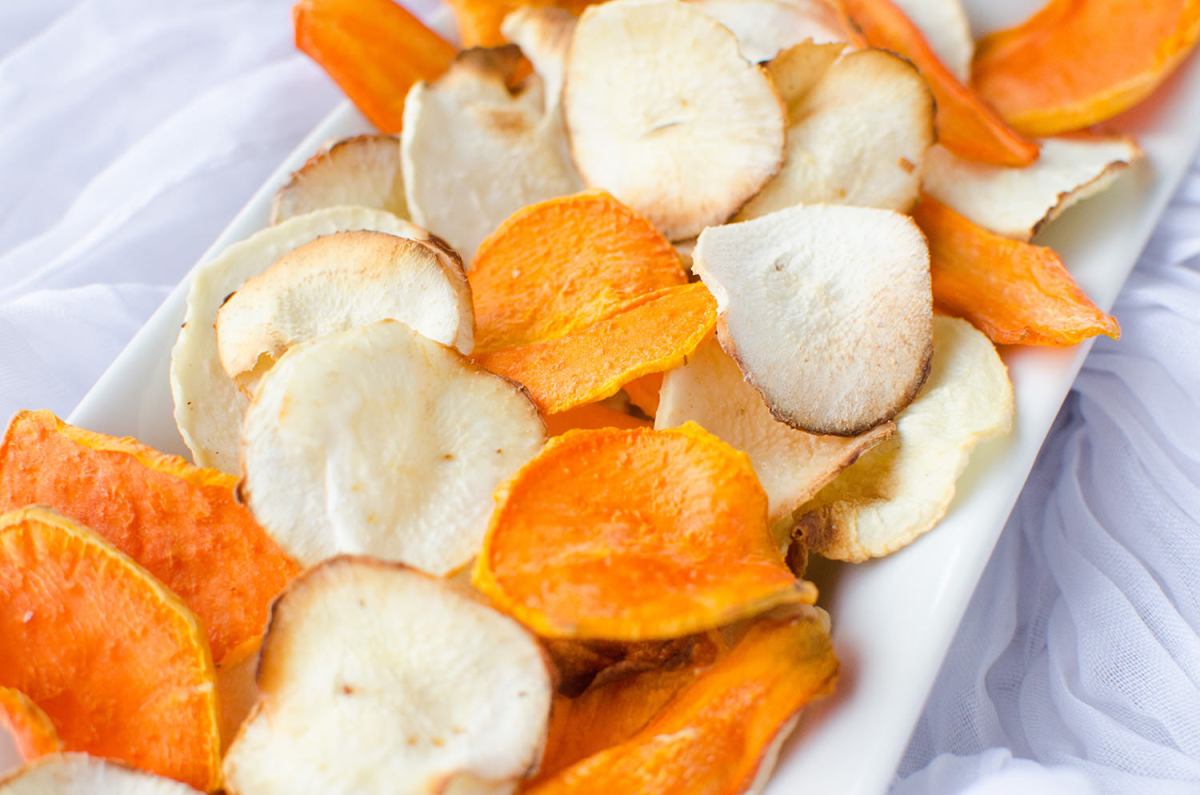Craving crispy, delicious veggie chips without the worry of hidden allergens? This guide empowers you to create your own allergy-friendly snacks, tailored to your dietary needs. Learn to bake perfectly crunchy chips using a variety of vegetables, mastering techniques for optimal texture and flavor, all while navigating common allergens with confidence. We’ll explore different baking methods, ingredient substitutions, and creative serving ideas to elevate your snack game.
From selecting the freshest produce and mastering the art of precise slicing to understanding the nuances of oven temperatures and baking times, this comprehensive guide provides a step-by-step journey into the world of homemade, allergy-conscious veggie chips. Discover the secrets to achieving that perfect balance of crispness and flavor, transforming simple vegetables into irresistible, healthy treats. Whether you’re avoiding gluten, dairy, or other allergens, this guide offers adaptable recipes and techniques to ensure everyone can enjoy these delightful snacks.
Ingredient Sourcing & Preparation
Crafting delectable allergy-friendly veggie chips begins with selecting the freshest, highest-quality ingredients. The flavor and texture of your final product hinge on the quality of your starting materials, so taking the time to choose wisely is crucial. This section details how to select, prepare, and season your vegetables for optimal results.
The vibrant colors and crisp textures of your finished chips are directly related to the freshness and quality of the vegetables you choose. Opt for firm, blemish-free vegetables with vibrant hues. Avoid vegetables that show signs of wilting, bruising, or discoloration. The ideal vegetables will be recently harvested and stored correctly to maintain their peak quality.
Vegetable Selection
Selecting the right vegetables is paramount. Root vegetables like sweet potatoes, carrots, and beets offer a naturally sweet and earthy flavor profile, while sturdy vegetables such as zucchini, bell peppers, and parsnips provide a delightful range of textures and tastes. Consider the desired flavor profile when selecting your vegetables. Sweet potatoes will produce a naturally sweeter chip, while parsnips will impart a more earthy note. Beets, while requiring a slightly longer baking time, will reward you with intensely vibrant, earthy chips. The possibilities are vast and exciting!
Washing and Slicing Techniques
Thorough washing is essential to remove any dirt, pesticides, or debris. Gently scrub the vegetables under cool running water, using a vegetable brush if necessary. Pat them completely dry with paper towels or a clean kitchen towel. This ensures even cooking and prevents the chips from becoming soggy.
Slicing techniques significantly impact the final texture of the chips. Aim for uniformly thin slices, ideally between 1/8 and 1/4 inch thick, for even cooking and optimal crispness. A mandoline slicer provides consistent results, but a sharp knife will also work well if you’re careful to maintain consistent thickness. For a more rustic look, you can hand-slice the vegetables, but maintain a similar thickness across all pieces. Remember, consistent thickness ensures even baking and prevents some chips from burning while others remain undercooked.
Seasoning for Enhanced Flavor
Seasoning plays a pivotal role in elevating the flavor profile of your veggie chips. Experiment with a variety of herbs, spices, and seasonings to create unique flavor combinations. A simple blend of sea salt and freshly cracked black pepper is a classic choice. For a more complex flavor, consider adding garlic powder, onion powder, paprika, cumin, or chili powder. Remember to season generously, but avoid over-seasoning, which can overpower the natural flavors of the vegetables. For example, a blend of smoked paprika, garlic powder, and a touch of cayenne pepper would complement the sweetness of sweet potato chips beautifully. Conversely, a simpler seasoning of sea salt and freshly ground rosemary would perfectly highlight the earthy notes of parsnip chips. The key is to experiment and discover your own favorite combinations.
Step-by-Step Recipe Guide
This recipe provides a detailed guide for creating delicious and allergy-friendly sweet potato chips, perfect for those with common food sensitivities. We’ll focus on maintaining a crisp texture and vibrant color while ensuring they’re free from common allergens. The process is straightforward, requiring minimal equipment and readily available ingredients.
Sweet Potato Preparation and Slicing
Begin by selecting firm, uniformly-sized sweet potatoes. Avoid those with bruises or soft spots. Wash them thoroughly and pat them completely dry with a clean kitchen towel. This step is crucial for achieving crisp chips; excess moisture will lead to steaming rather than crisping during baking. Imagine the sweet potatoes, their skin a deep russet orange, gleaming under the kitchen light. Once dried, use a mandoline slicer or a sharp vegetable peeler to create thin, even slices, approximately 1/8 inch thick. Uniform thickness ensures even cooking and prevents some chips from burning before others are done. The slices should be smooth and uniform, like delicate orange-hued wafers.
Seasoning and Arrangement
In a large bowl, toss the sweet potato slices with your chosen seasoning blend. This recipe suggests a simple blend of sea salt, black pepper, and a touch of paprika for a subtle smoky flavor. You can also experiment with other allergy-friendly spices like garlic powder or onion powder. Visualize the sweet potato slices, now coated in a fine layer of spices, their vibrant color slightly muted by the seasoning. Arrange the seasoned slices in a single layer on a large baking sheet lined with parchment paper. Ensure they are not overlapping; this will prevent steaming and promote even crisping. The baking sheet will be a colorful tapestry of sweet potato slices, ready for the oven.
Baking Process and Timing
Preheat your oven to 250°F (120°C). This lower temperature is key to achieving crispy chips without burning them. Place the baking sheet in the preheated oven and bake for approximately 45-60 minutes, flipping the chips halfway through. Keep a close eye on them during the last 15 minutes, as they can quickly go from perfectly crisp to burnt. Observe the chips as they bake; they’ll gradually transform from a soft, slightly translucent orange to a deep, rich russet color, becoming increasingly crisp and slightly curled at the edges.
Troubleshooting and Tips for Perfect Chips
If your chips are sticking to the parchment paper, ensure the paper is properly placed and that the sweet potato slices aren’t overcrowded. Lightly oiling the parchment paper can also help prevent sticking. Should the chips burn before they are crisp, reduce the oven temperature by 25°F (15°C) and increase the baking time. Conversely, if they are not crisp enough after the recommended time, increase the temperature slightly and continue baking, keeping a close watch. Remember, oven temperatures can vary, so adjust baking times and temperatures as needed to achieve your desired level of crispness. Overly soft chips indicate insufficient drying of the sweet potatoes before baking, or overcrowding on the baking sheet. Burnt chips signify too high an oven temperature or inadequate monitoring during baking.
Cooling and Storage
Once the chips are golden brown and crisp, remove them from the oven and let them cool completely on the baking sheet. This allows them to further crisp up and prevents them from becoming soggy. Once cool, transfer them to an airtight container for storage. They will maintain their crispness for several days if stored properly. The final product: a bowl filled with vibrant, crispy sweet potato chips, each one a testament to careful preparation and baking.
Storage & Serving Suggestions

Maintaining the satisfying crunch of your homemade allergy-friendly veggie chips requires careful storage. Proper storage not only preserves their delightful crispness but also extends their shelf life, allowing you to enjoy your healthy snack for longer. Serving suggestions, meanwhile, can elevate these simple chips from a snack to a culinary experience.
Proper storage is key to preserving the crispness of your baked veggie chips. Exposure to moisture is the enemy of a perfectly crunchy chip. The ideal storage method involves airtight containers, preferably ones made of glass or food-grade plastic. These containers create a barrier against humidity, preventing the chips from becoming soggy. Store the chips in a cool, dark, and dry place, away from direct sunlight or heat sources which can accelerate staleness. Avoid storing them in the refrigerator, as the cold, damp environment can actually make them softer.
Optimal Storage Techniques for Veggie Chips
Airtight storage in a cool, dry place is paramount. Imagine a row of vibrant, perfectly crisp chips nestled within a clear glass jar, its seal ensuring a shield against moisture. The chips retain their vibrant colors and satisfying crunch for days, even weeks, when stored correctly. For longer storage, consider using a vacuum sealer to remove excess air from the container, further extending the crispness and shelf life of the chips. This technique is especially useful if you’ve made a large batch.
Creative Serving Suggestions & Pairings
The versatility of homemade veggie chips extends beyond simple snacking. Their delicate flavors pair well with a range of dips and accompaniments. Consider serving them with a vibrant, creamy avocado dip, the rich green contrasting beautifully with the colorful chips. Or, for a spicier kick, a homemade mango salsa adds a sweet and tangy contrast. The chips also make a delightful addition to salads, adding a textural element and a burst of flavor. Imagine a vibrant salad with mixed greens, colorful bell peppers, and a sprinkle of crunchy veggie chips, creating a visually stunning and delicious dish.
Visually Appealing Presentation for Gatherings
For parties or gatherings, consider presenting your veggie chips in a visually appealing manner. A rustic wooden bowl overflowing with a colorful assortment of chips—beetroot, carrot, sweet potato—creates an inviting centerpiece. Alternatively, arrange the chips on a tiered serving platter, with different types of chips separated for easy selection. You can even garnish the platter with fresh herbs like rosemary or thyme for an added touch of elegance. Consider using small, clear glass bowls for individual servings, allowing guests to easily access their favorite chips. The contrast of colors and textures makes for a beautiful and appetizing display, instantly elevating the snack to a sophisticated party treat.
Baking your own allergy-friendly veggie chips is not only rewarding but also incredibly empowering. By taking control of your ingredients and methods, you gain the freedom to enjoy healthy, delicious snacks that cater specifically to your needs. Remember the importance of fresh, high-quality ingredients, precise baking techniques, and creative serving ideas to truly elevate your homemade chips. So, gather your vegetables, preheat your oven, and embark on this delicious journey to crunchy, allergen-free perfection!
FAQ Insights
Can I store these chips for a long time?
Store baked veggie chips in an airtight container at room temperature for up to a week, or in the freezer for longer storage (up to 3 months).
What if my chips burn in the oven?
Reduce oven temperature by 25°F and check for doneness more frequently. Thinner slices will require shorter baking times.
Can I use different types of oil for baking?
Yes, you can experiment with various oils like avocado oil, coconut oil, or olive oil, but choose ones with a high smoke point to avoid burning.
Are these chips suitable for children with allergies?
Always double-check ingredient labels and ensure all ingredients align with your child’s specific allergies. Supervise children while eating.


